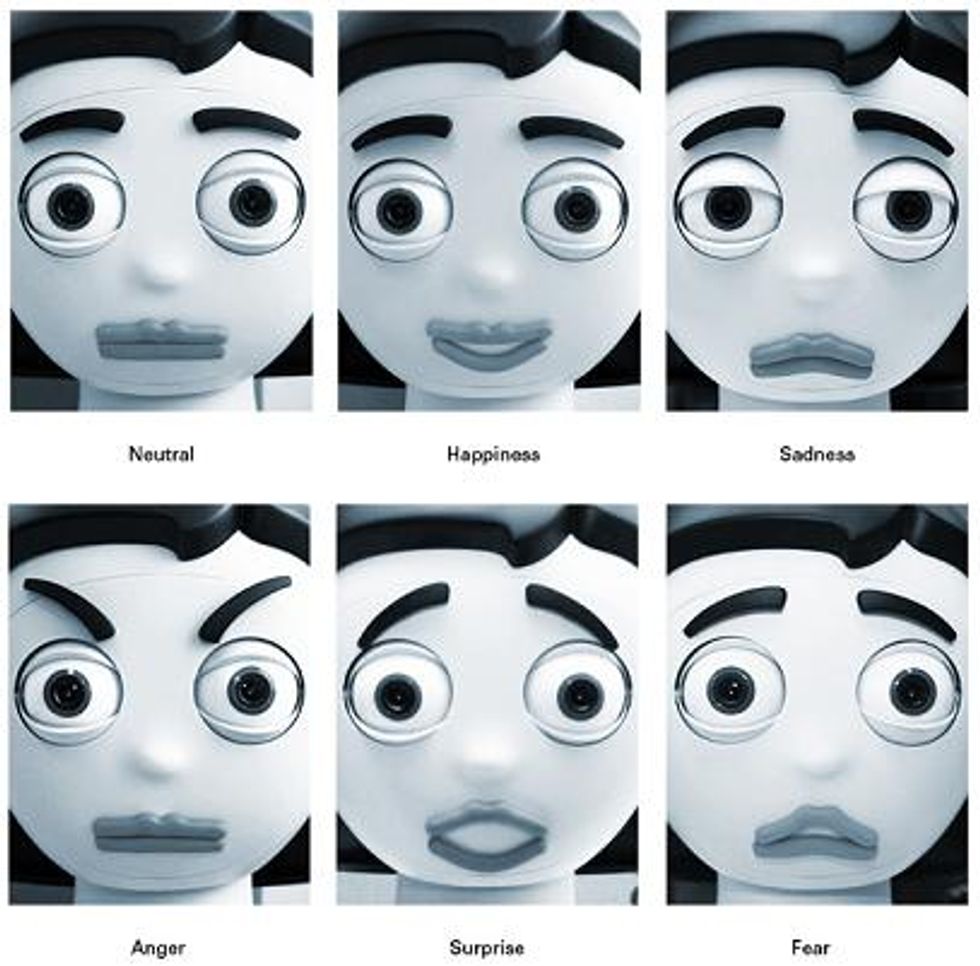Does this blushing fake face freak you out? German engineers at Bielefeld University hope it's more cute than creepy. It's a robotic head called Flobi and it's designed to express emotions while overcoming the creep factor associated with the Uncanny Valley, when robots resemble zombies due to design issues.
There have been a number of robotic heads developed over the years in an attempt to replicate human interaction and emotional expression. Flobi, described by Ingo Lutkebohle and colleagues in a paper for the ICRA 2010 conference, is notable in that it has a magnetic mouth actuator system as well as a modular construction that lets an operator perform a sex change of sorts. In only a few minutes, Flobi's plastic face and hair features can be swapped for male or female.
Flobi, about the size of a human head, was designed to be effective in communication as well as sensing. It has 18 actuators, and is equipped with microphones, gyroscopes, and high-res cameras. As seen in the photos and video below, it can express a variety of emotions such as anger and surprise by moving its eyes, eyebrows and mouth. It also has four cheek LEDs to mimic blushing.
The obvious design features are that the hardware is almost completely concealed, there are no holes in the face, and its appearance is cartoonish, not unlike Philips' human-robot interaction platform iCat.
"The comic nature is far enough from realistic not to trigger unwanted reactions, but close enough that we can take advantage of familiarity with human faces," Lutkebohle and colleagues write. "One advantage we have already explored is the use of 'babyface' attributes."
These features were very deliberate choices so that people interacting with Flobi would not notice the degree to which it falls short of human. That gap often results from silicone rubber-skin robots such as CB2, a mechatronic baby built at Osaka University, that can seem creepy.
"While I wouldn't say that plastic is inherently superior to other materials, it is instantly recognizable as a human artifact," says Lutkebohle. "Furthermore, rigid plastics match current actuation capabilities in contrast to latex, for instance, which is hard to actuate without triggering the Uncanny Valley effect."
So does Flobi overcome the Uncanny Valley? That's highly subjective, but at least one roboticist unaffiliated with the project thinks it does.
"There is value in robotics making aesthetics and design a first class citizen," says Andrea Thomaz, an assistant professor of interactive computing at Georgia Institute of Technology, who wrote about Flobi on her blog. "How the robot looks will directly impact people's perceptions of it, and in turn will impact any studies of interaction done with the platform. The Flobi project demonstrates a couple of interesting ideas with respect to robot design: magnetic features to limit awkward holes on the face, and swappable features to easily change the gender/style."
Will plastic, and not rubber, become the dominant robot design medium? We'll see whether Flobi will inspire other robots to overcome the Uncanny Valley.
Images and video: Bielefeld University





